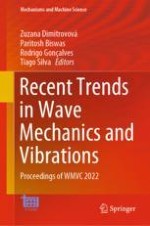This volume gathers select proceedings of the 10th International Conference on Wave Mechanics and Vibrations (WMVC), held in Lisbon, Portugal, on July 4-6, 2022. It covers recent developments and cutting-edge methods in wave mechanics and vibrations applied to a wide range of engineering problems. It presents analytical and computational studies in structural mechanics, seismology and earthquake engineering, mechanical engineering, aeronautics, robotics and nuclear engineering among others. The volume will be of interest for students, researchers, and professionals interested in the wide-ranging applications of wave mechanics and vibrations.
